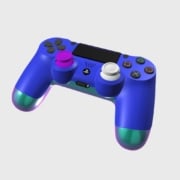How to Reduce Product Costs of Samples
Before you launch a product in the market, you most likely need to show your new item to partners, clients, customers, or team members. But how do you do that without draining your account? We got your back! There are a few steps that you can take during the process that can help you reduce product costs of samples.
We bring you some tips and tricks to move forward when crafting your next product development sampling. Ready, set, sample!
Streamline Your Decision-Making Processes
One of the best ways to reduce product costs when it comes to developing your samples is to focus on eliminating excess sampling. This calls for a quick and accurate decision-making process. You can do this by:
Knowing your Target Audience and Goals
Before you can dive into any product sample, you absolutely need to know your goals and your audience.
What is the purpose of the product? Who’s my Buyer Persona or who’s my ICP (Ideal Customer Profile)? Does my product fit with my target audience? What problems does it solve? What experience does it provide?These are the first steps and, when done correctly, they’ll save you a lot of effort. Apply some time in these early stages and answer these questions, because in the end, it will reduce product costs.
Making Sure Your Team Has the Right Tools
During product development, your team needs to have the right tools and procedures in place. Without these, success can be limited. And, just like mentioned above, lack of the right resources could result in problems down the line.
You want to ensure that your team, from the beginning, understands the goals and has all the tools and supplies to make educated decisions for your product and, eventually, the product sample. They should also be made aware of any client expectations, requirements, targets, deadlines, and other details. This information combined with the correct tools will ensure your product development and sampling goes smoothly. With this knowledge in place, you’ll be able to reduce product costs, and keep everyone on the same page.
Pay Attention to the Market Trends
This applies to every business, everywhere. It doesn’t make it any less important though. Market trends should assist you in setting the tone for your organization. Check out the reports on market growth and trends for your e-commerce business and know how to take advantage of that data.
During this stage of the planning process, you should also be throwing out any “useless” features, which will help you reduce product costs.
Ask yourself the question, “What value does this add to my customers’ experience of my product?”. If the answer is not much, then let it go. Having extra needless features just for the sake of it will not help you stand out from the babel of new products out there.
They’ll most likely increase your product’s overall price but the sampling cost will also grow. If you’re wondering how to reduce manufacturing costs, paying attention to market trends and re-evaluating product features are two important steps.
Opt for Digital Prototyping
Digital prototyping is a clever way of lowering sample costs. Why? Well, it will help ensure you have a working product, stay on your development schedule, regularly update your clients, and increase customer engagement. It’s also useful when optimizing speed to market and cutting down on supply chain issues. Talk about being able to reduce product costs in a smart way!
Create Fewer, but More Accurate, Product Samples
How to reduce manufacturing costs? Read above! By focusing on crafting fewer product samples that meet your goals and your clients’ expectations, you’ll be optimizing the process.
This is not the time for mass production. We advise you to create fewer and more accurate samples, so you can reduce product costs.
The right strategy during development can help reduce instances of waste going forward. You will have to produce less, meaning you spend less. Overall development costs will be lower.
Not to mention that you will save on shipping costs. With fewer samples produced, you can reduce product costs, specifically when it comes to air freight or other logistic costs.
Try to Negotiate With Vendors and Suppliers
Negotiation should be a part of product development, from the early stages to the mass production. That includes crafting the product sample. Talk with your suppliers and vendors – see what deals can be made. You may be surprised at how much you’re able to reduce product costs, by sitting down and discussing a few details. Negotiating puts you in a favorable position.
Your product development and sample team should also consider shopping around. There are bound to be other suppliers and vendors, so be sure to ask them for quotes regularly to ensure you’re getting the best price for your budget.

All things considered…
Creating a product sample can seem fairly easy, which is why many companies go for it both feet in. Knowing your target audience and how the product fits their needs and desires should be number one on your list. Then make sure your team is up to speed with the right tools and information. This will not only save you money – it will save you time, effort, and greatly reduce product costs.
Are you curious about how to reduce product costs on sampling? Wondering how a 3D product configurator might help you in doing so? Get in touch with our team.








